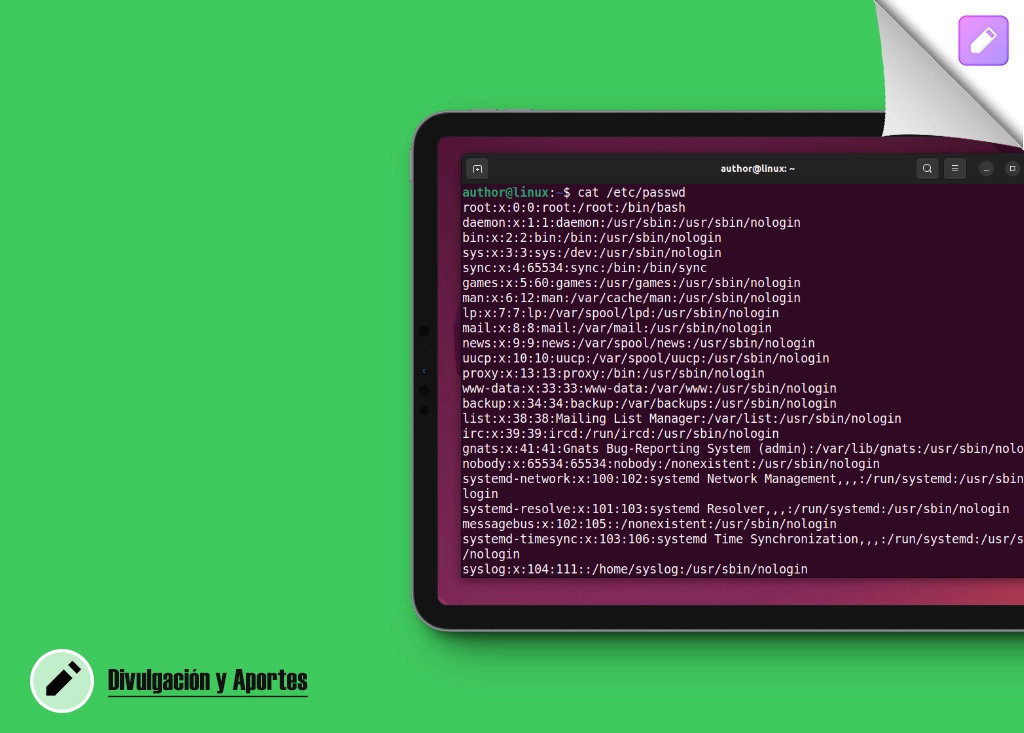Clearing up doubts.
- What is not allowed must be prohibited.
- A chain is only as strong as its weakest link.
- The security measure is directly proportional to the level of existing risk.
- An
oldcomputer dog must learn new tricks. - Computer security is everyone's job.
In WINDOWS

In LINUX
To create a conventional user:
Authenticate as root user
#JS1~$ su - 2Password: 3 4~# 5 6
Create the user
#JS1useradd userName 2 3
Add password
#JS1passwd userName 2 3
To switch to the new user
#JS1su userName 2 3
To create a root user:
Create the user
#JS1useradd -u 0 -o -g 0 userName2 2 3
- u [UID] -> user identifier of the new account. The UID (User ID) is added in the [UID] field.
- o -> allows creating users with duplicate (non-unique) identifiers (UIDs).
- g [GROUP] -> name or identifier of the primary group of the new account.
- p [PASSWORD] -> encrypted password of the new account
Explanation: -u 0 we are assigning the userPrueba account the UID (User IDentifier) 0, each account has a user identifier, that of the root account is 0, by assigning the value 0 to userPrueba we are giving it the same user privileges as the root account. Usually you cannot have two accounts with the same UID, that is why the -o option is added, which allows an exception to be made so that it can be done. The -g 0 assigns the GID (Group IDentifier) 0 to userPrueba, so that it belongs to the same group as the root account.
Standard user registration:
Enter as administrator (root) with:
#JS1//option a) 2~$ su - 3Password: (honeydrive) 4//option b) 5~$ sudo su - 6[sudo] Password: (honeydrive) 7 8
Once inside you will switch to the # symbol and you will be able to create the new standard user;
#JS1~#useradd userTest1 2~#passwd userTest1 (test1) //optional password 3 4
and that's it!
You can try to make the configuration changes to authenticate that it is a standard user with:
first we enter the user and then we change the configuration of the eth0 port
#JS1//enter as user UserTest1 2~# su userTest1 3//inside the user we make the query of the available ports to confirm that eth0 exists 4$ ifconfig 5 6//we try to turn off the eth0 port 7$ ifconfig eth0 down 8SIOCSIFFLAGS: Permission denied 9//expected message denied 10 11
Finally, to return to the Administrator user
#JS1//option a) 2$su – 3Password: (honeydrive) 4//option b) 5$exit 6
Administrator user registration:
Enter as administrator (root) with: (repeat step one or confirm being in root #)
#JS1~# useradd -u 0 -o -g 0 userTest2 2~# passwd userTest2 (test2) //optional password 3 4
You can try to make the configuration changes to authenticate that it is an Administrator user with:
First we enter the administrator user and then we change the configuration of the eth0 port
#JS1//enter as user UserTest2 2~# su userTest2 3//inside the user we make the query of the available ports to confirm that eth0 exists 4$ ifconfig 5 6//we try to turn off the eth0 port 7$ ifconfig eth0 down 8//we confirm that the changes have been made 9$ ifconfig 10//finally we return it to the initial configuration with: 11$ ifconfig eth0 up 12

